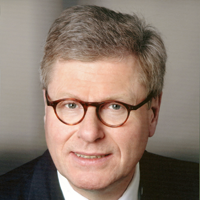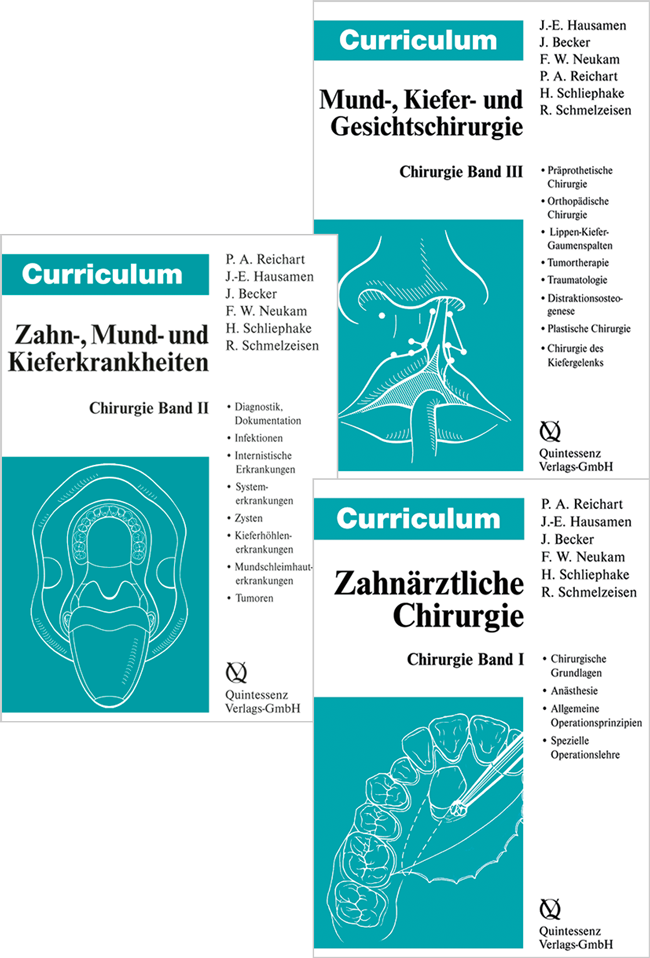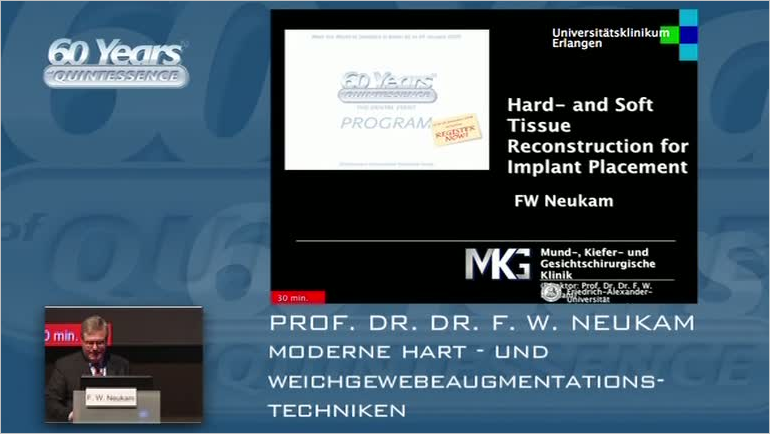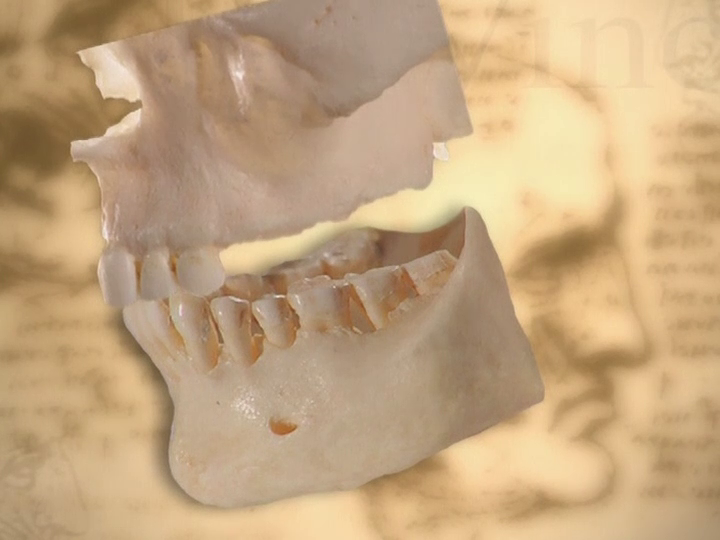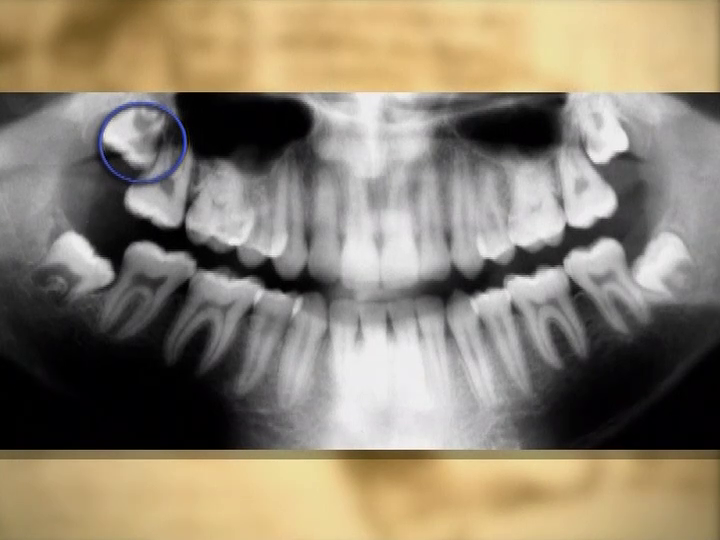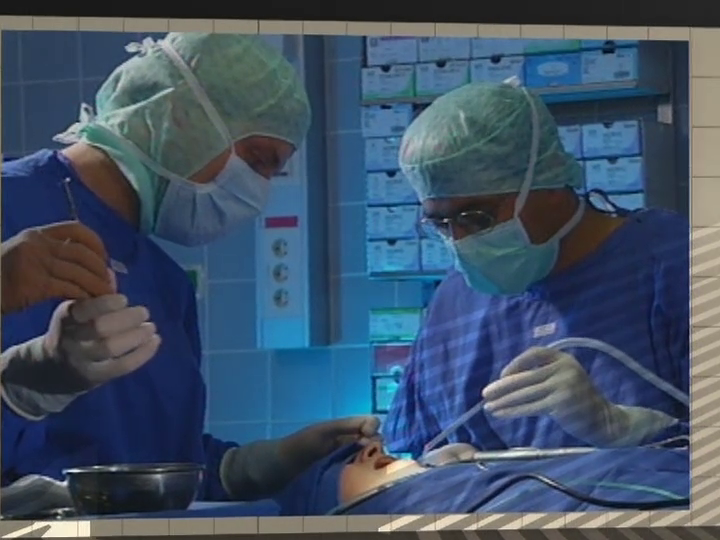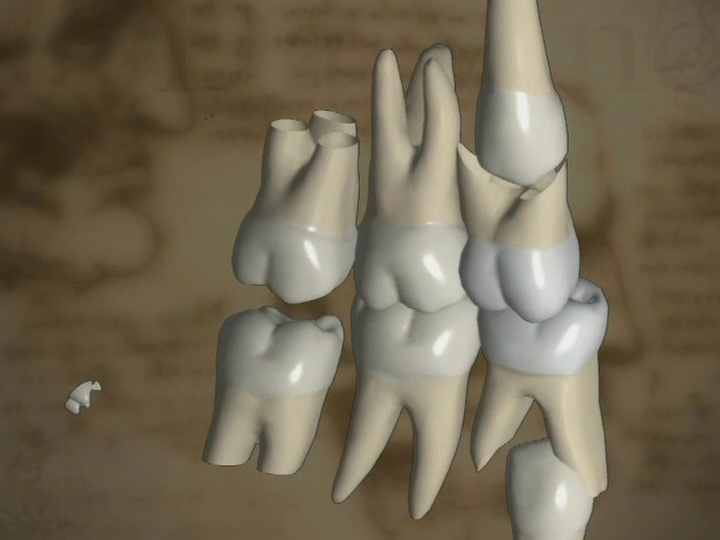International Journal of Oral Implantology, 5/2018
SupplementPubMed-ID: 30109296Seiten: S21-S25, Sprache: EnglischLutz, Rainer / Schmitt, Christian / Buchbender, Mayte / Neukam, Friedrich WilhelmThis review provides an overview of review and consensus articles of the past 5 years regarding surgical complications in implant dentistry. The focus in this article is on surgical complications occurring after implant insertion and on risk factors that compromise oral implant osseointegration.
Schlagwörter: dental implants, oral implants, surgical complications
The International Journal of Prosthodontics, 5/2017
DOI: 10.11607/ijp.5239, PubMed-ID: 28859180Seiten: 419-425, Sprache: EnglischStelzle, Florian / Riemann, Max / Klein, Alfred / Oetter, Nicolai / Rohde, Maximilian / Maier, Andreas / Eitner, Stephan / Neukam, Friedrich Wilhelm / Knipfer, ChristianAims: Complete maxillary edentulism and prosthetic rehabilitation with removable full dentures are known to affect speech intelligibility. The aim of this study was to prospectively investigate the long-term effect of time on speech intelligibility in patients being rehabilitated with newly fabricated full maxillary dentures.
Materials and Methods: Speech was recorded in a group of 14 patients (male = 9, female = 5; mean age ± standard deviation [SD] = 66.14 ± 7.03 years) five times within a mean period of 4 years (mean ± SD: 47.50 ± 18.16 months; minimum/maximum: 24/68 months) and in a control group of 40 persons with healthy dentition (male = 30, female = 10; mean age ± SD = 59 ± 12 years). All 14 participants had their inadequate removable full maxillary dentures replaced with newly fabricated dentures. Speech intelligibility was measured by means of a polyphone-based speech recognition system that automatically computed the percentage of accurately spoken words (word accuracy [WA]) at five different points in time: 1 week prior to prosthetic maxillary rehabilitation (both with and without inadequate dentures in situ) and at 1 week, 6 months, and a mean of 48 months after the insertion of newly fabricated full maxillary dentures.
Results: Speech intelligibility of the patients significantly improved after 6 months of adaptation to the new removable full maxillary dentures (WA = 66.93% ± 9.21%) compared to inadequate dentures in situ (WA = 60.12% ± 10.48%). After this period, no further significant change in speech intelligibility was observed. After 1 week of adaptation, speech intelligibility of the rehabilitated patients aligned with that of the control group (WA = 69.79% ± 10.60%) and remained at this level during the examination period of 48 months.
Conclusion: The provision of new removable full maxillary dentures can improve speech intelligibility to the level of a healthy control group on a long-term basis.
The International Journal of Oral & Maxillofacial Implants, 3/2012
PubMed-ID: 22616043Seiten: 513-522, Sprache: EnglischStelzle, Florian / Neukam, Friedrich Wilhelm / Nkenke, EmekaPurpose: Piezoelectric surgery is meant to be a gentle method for implant site preparation (ISP). However, the application of load and its influence on heat development over time and effects on soft tissue are unknown. Therefore, this study sought to evaluate heat development in the bone and the duration of the procedure according to load application, as well as preservation of the sinus floor mucosa during piezoelectric ISP.
Materials and Methods: One hundred twenty implant sites (6 mm deep × 3 mm wide) were prepared in the calvaria of ex vivo pig heads using piezoelectric surgery. The load applied to the working tip was increased in 100-g intervals up to 1,000 g. The bone temperature was measured, and thermal effects were analyzed histomorphometrically. The duration of each ISP was recorded. Another 12 ISPs were performed at the lateral wall of the maxillary sinus in the vicinity of the sinus floor mucosa, and sites were checked for perforation.
Results: Temperature and histologic effects of heat demonstrated a significant positive correlation with the applied load. The duration of ISP was significantly negatively correlated with load application. The maximum temperature generated by piezoelectric surgery was 64.5°C (load of 901 to 1,000 g). At a load of 401 to 500 g, the average temperature was 40.2°C ± 3.3°C, the average thermal damage extended 115.9 ± 16.3 µm beyond the ISP area, and the maximum temperature did not exceed 47°C. The average duration of ISP using this load interval was 45.5 ± 9.4 seconds. Two perforations of the sinus floor mucosa were detected.
Conclusions: In the present setting, the applied load during piezoelectric ISP should not exceed 500 g to prevent temperatures above 47°C in the bony implant socket. With a load of 400 to 500 g, ISP took 40 to 50 seconds.
Schlagwörter: dental implant, implant site preparation, piezosurgery, sinus floor elevation, thermal tissue alteration, time duration
Implantologie, 3/2009
Seiten: 327-334, Sprache: DeutschLutz, Rainer / Neukam, Friedrich Wilhelm / Schlegel, Karl AndreasDie Behandlung periimplantärer Infektionen rückt mit stetig steigender Anzahl gesetzter Implantate zunehmend in den Fokus der implantologisch tätigen Behandler. Eine erfolgreiche Periimplantitistherapie umfasst die kombinierte Behandlung der periimplantären Entzündung, die Implantatoberflächendekontamination, die Knochenregeneration der periimplantären Defekte und die Reosseointegration der vormals kontaminierten Implantatoberflächen. Dabei limitieren sich die einzelnen Schritte gegenseitig. Jüngste Forschungsarbeiten weisen darauf hin, dass durch eine schonende Reinigung der Implantatoberfläche in Kombination mit einer chirurgisch-regenerativen Therapie und gegebenenfalls einer Antibiose periimplantäre Defekte erfolgreich therapiert werden können. Eine nach diesen Maßstäben erfolgreiche Therapie wird in diesem Fallbericht dargestellt.
Schlagwörter: Periimplantitis, Knochenregeneration, Knochenersatzmaterial, Reosseointegration, Implantatoberflächendekontamination, Antibiotikatherapie
Implantologie, 2/2009
Seiten: 155-163, Sprache: DeutschStelzle, Florian / Nkenke, Emeka / Neukam, Friedrich Wilhelm / Schlegel, Karl AndreasEin LiteraturüberblickDie Piezochirurgie ist in der Oral- und Mund-, Kiefer-, Gesichtschirurgie als ultraschallbasiertes Verfahren der Knochenbearbeitung etabliert. In der Literatur werden unterschiedliche Anwendungsbereiche beschrieben. Einige chirurgische Anwendungen sind in klinischen Studien den klassischen Operationsverfahren vergleichend gegenübergestellt worden. Aus diesen Studien sind verwertbare Aussagen zu entnehmen. Die Vor- und Nachteile des Verfahrens sind jedoch trotz einer größeren Anzahl von Publikationen meist nur deskriptiv abgehandelt worden. Einzelne experimentelle Studien beleuchten bislang nur Teilbereiche dieser zukunftsweisenden Technik.
Schlagwörter: Piezochirurgie, Ultraschallchirurgie, gewebeselektive Osteotomie, Sinusbodenelevation, kieferorthopädische Chirurgie, autologes Knochentransplantat, ossäre Regeneration
Implantologie, 4/2008
Seiten: 383-389, Sprache: DeutschBauer, Julia / Schlegel, Karl Andreas / Nkenke, Emeka / Wichmann, Manfred / Neukam, Friedrich Wilhelm / Eitner, StephanDie implantologische Rehabilitation ist heute ein wichtiger Bestandteil der prothetischen Versorgung von Tumorpatienten. Viele retrospektive Studien belegen trotz des bestrahlten Implantatlagers und veränderter anatomischer Lagerverhältnisse günstige Langzeitergebnisse in Bezug auf die Überlebensrate der Implantate. Ziel der Studie war es, die Vorhersagbarkeit des Erfolgs einer implantatprothetischen Rehabilitation von Tumorpatienten zu validieren. Im Rahmen einer retrospektiven Studie wurden bei insgesamt 102 Tumorpatienten mit 449 Implantaten die Ergebnisse der implantologischen Rehabilitation evaluiert. Es zeigte sich bei einer mittleren Liegezeit der Implantate von 5,17 Jahren eine Implantatüberlebensrate von 97,5 % und eine Implantaterfolgsrate von 90,9 %. Die Versorgung von Tumorpatienten mit Implantaten und deren prothetische Versorgung muss aufgrund der vorliegenden Resultate als eine prognostisch sichere Therapie mit vorhersagbaren Ergebnissen angesehen werden.
Schlagwörter: Enossale Implantate, Radiatio, Tumorpatienten, Defektprothetik
The International Journal of Oral & Maxillofacial Implants, 4/2005
Seiten: 540-546, Sprache: EnglischNkenke, Emeka / Fenner, Matthias / Vairaktaris, Eleftherios G. / Neukam, Friedrich Wilhelm / Radespiel-Tröger, MartinPurpose: To assess histomorphometric parameters of dental implants placed in partially edentulous maxillae of minipigs.
Materials and Methods: In 9 minipigs, 6 XiVE implants were placed on each side of the maxilla, either after implant site preparation by an osteotome technique or by spiral drills. The implants were restored with fixed provisional restorations and loaded either immediately or after healing periods of up to 5 months. After a loading period of 6 months, the animals were sacrificed and the implants were retrieved together with the adjacent bone. Histologic specimens were prepared and bone-to-implant contact (BIC) ratio, interthread bone area, and peri-implant bone area were determined.
Results: An analysis of variance revealed that the BIC ratio on the palatal side was significantly influenced by the preparation technique of the implant site (P = .001) and by the healing period (P = .02). After implant site preparation by an osteotome technique, higher BIC values were achieved for implants that were loaded either immediately or after healing periods of 1 to 3 months. After healing periods of 4 to 5 months, implant site preparation with spiral drills showed slightly better results in regard to BIC. Interthread bone area and peri-implant bone area did not differ significantly statistically for the 2 implant placement techniques and the 3 healing periods. Discussion and
Conclusion: After 6 months of functional loading in the maxilla, successful immediately loaded implants performed the same as implants subjected to an unloaded healing period prior to loading as far as histomorphometric data were concerned. Prospective randomized clinical studies should be carried out in humans to compare immediate loading to loading after an unloaded healing phase.
The International Journal of Oral & Maxillofacial Implants, 1/2005
Seiten: 39-47, Sprache: EnglischNkenke, Emeka / Lehner, Bernhard / Fenner, Matthias / Roman, Fidel San / Thams, Ulf / Neukam, Friedrich Wilhelm / Radespiel-Tröger, MartinPurpose: To assess the course of the stability and the failure rate of dental implants placed in the partially edentulous maxillae of minipigs.
Materials and Methods: Three months after tooth removal, implants were placed in 9 minipigs. Six implants (XiVE; Friadent, Mannheim, Germany) were placed on each side of the posterior maxilla after preparation of the implant sites either by an osteotome technique or with spiral drills. Implant stability was assessed by resonance frequency analysis (RFA) at the time of placement, at second-stage surgery (which took place after a healing periods of 1, 2, 3, 4, or 5 months), and after a loading period of 6 months.
Results: Implant stability was significantly influenced by the healing period (P = .007). Implant stability decreased after 1 to 3 months of healing for both of the placement techniques and increased after a healing period of 4 months. After implant site preparation by an osteotome technique, 6 of 12 immediately loaded implants, 18 of 24 implants loaded after healing periods of 1 to 3 months, and 1 of 18 implants loaded after a healing period of 4 or 5 months were lost. After implant site preparation using spiral drills, 7 of 12 immediately loaded implants, 12 of 24 implants loaded after healing periods of 1 to 3 months, and 2 of 18 implants loaded after healing periods of 4 or 5 months were lost. Broad overlapping of confidence intervals for the number of implant failures revealed that there was no relevant difference between immediate and early functional loading for either of the 2 techniques. Discussion and
Conclusion: Implant loading after healing periods of 1 to 3 months did not improve implant survival compared to immediate loading in the posterior maxillae of minipigs. Not until a healing period of 4 months was reached did implant stability begin to increase. Only when functional loading was started at this point in time was maximal implant survival achieved.
The International Journal of Oral & Maxillofacial Implants, 4/2002
Seiten: 557-566, Sprache: EnglischNkenke, Emeka / Schlegel, Andreas / Schultze-Mosgau, Stefan / Neukam, Friedrich Wilhelm / Wiltfang, JörgPurpose: It was the aim of the present prospective study to quantify the gain in height of implant sites by endoscopically controlled osteotome sinus floor elevations (ECOSFE) with simultaneous implant placement and to report the number of sinus membrane perforations. Materials and Methods: From October 1999 to December 2000, of 92 sinus floor elevations, 18 were carried out endoscopically controlled with an osteotome technique. As augmentation material, -tricalcium phosphate (-TCP) or autogenous bone was used; 22 implants were placed. Results: The residual height of the alveolar crest in the posterior maxilla was 6.8 ± 1.6 mm on average. The implant lengths ranged from 10 to 16 mm (mean implant length 12.2 ± 1.4 mm). They were significantly larger than the residual height of the alveolar crests (P .0005). Elevation of the sinus floor with an osteotome had to be supported by conventional sinus floor elevation instruments after a mean elevation of 3.0 ± 0.8 mm to prevent perforation of the sinus membrane. However, 1 perforation occurred, which was repaired with a periosteal patch. At stage 2 surgery, 2 implants were removed because of mobility. Endoscopic control revealed one case in which -TCP could be found within the sinus; another case showed areas of polypoid mucosa on the sinus floor. Discussion: With the ECOSFE, perforations of the sinus membrane can be visualized; however, they cannot be avoided. Although this technique is less invasive than the lateral window technique, it cannot be recommended as a standard procedure in the posterior maxilla because of the large amount of additional equipment needed and the technically demanding procedure. Conclusion: The use of the ECOSFE should be confined to scientific trials.
The International Journal of Oral & Maxillofacial Implants, 1/1996
Seiten: 67-72, Sprache: EnglischMatsui, Yoshiro / Neukam, Friedrich Wilhelm / Wichmann, Manfred / Ohno, KohsukeAn investigation was conducted to determine whether Dental Prescale, a material that undergoes a graded color-producing chemical reaction when force is applied, could be used to evaluate occlusal load distribution objectively and quantitatively when combined with computer analysis. Ten patients with an implant-supported fixed cantilever prosthesis and a complete conventional maxillary denture were studied. The results indicated that the system can be used to evaluate occlusal load distribution with sufficient reproducibility. However, in its present form, the system is somewhat cumbersome, and its use must now be considered experimental. Further refinement is necessary to allow easier clinical use.
Schlagwörter: complete denture, dental implant, occlusal equilibration



